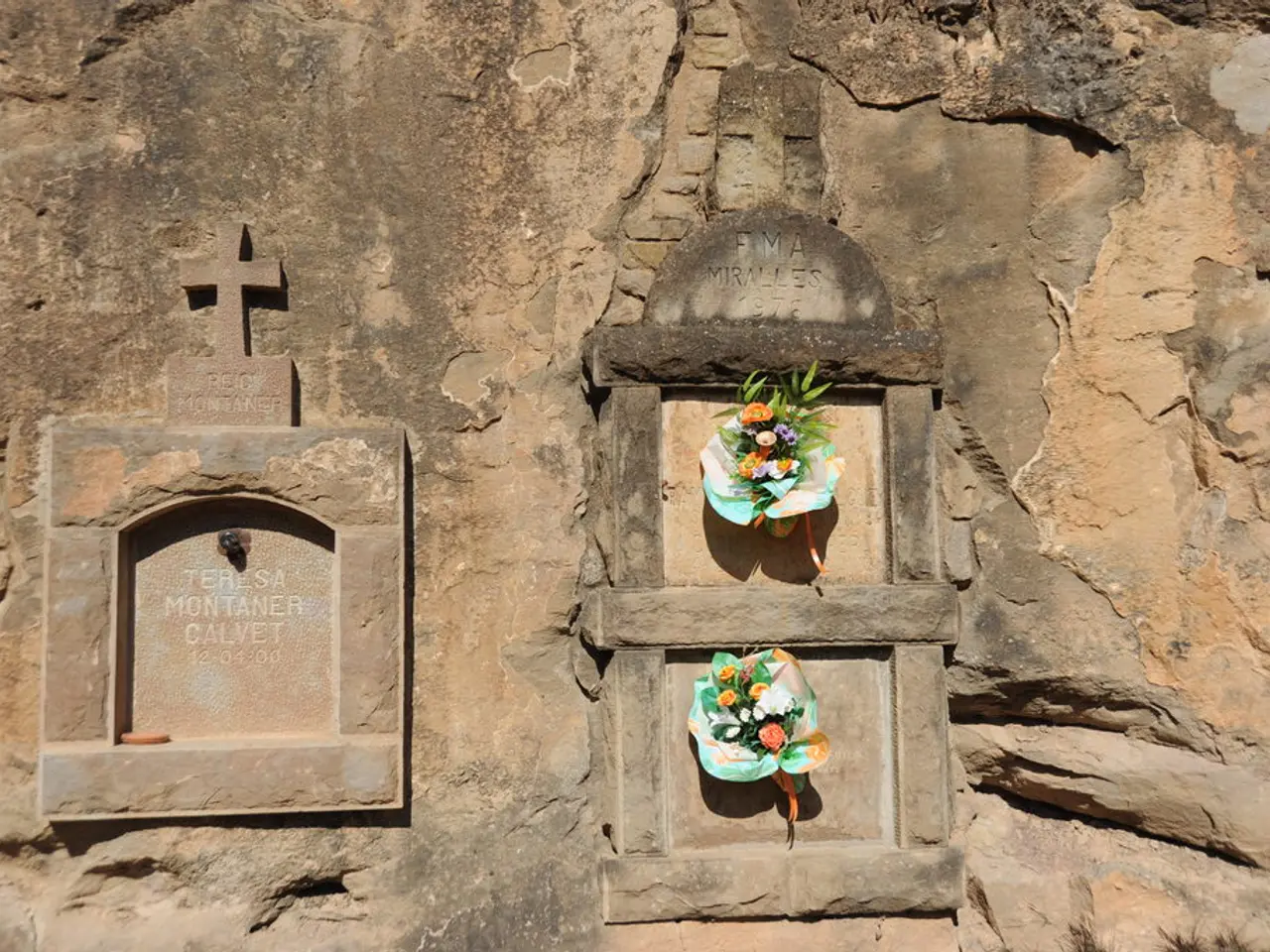Collective commemoration of HIV/AIDS victims outshines personal memorials in London's HIV/AIDS Memorial statue
In the heart of Fitzrovia, where the Middlesex Hospital once stood, a new monument will soon rise. The London HIV/AIDS memorial, funded by a £130,000 grant from Mayor Sadiq Khan, is set to be unveiled in the summer of 2026.
This significant public artwork will honour the thousands of lives lost to AIDS in the city, serving as a poignant reminder of the disease's impact and a testament to the resilience of those affected. The memorial's creation is a crucial step in preserving memory and challenging the stigma that still exists regarding certain diseases.
The artist behind this powerful tribute is Antony Gormley, renowned for his thought-provoking sculptures. The shortlist of artists selected to create the memorial also includes Anya Gallaccio, Ryan Gander, Harold Offeh, Shahpour Pouyan, and Diana Puntar.
London has a rich history of commissioning interesting and timely public works of art, especially via the Fourth Plinth program. This tradition continues with the upcoming memorial, which will join other significant public statues in the city that mark events, often disasters, rather than individuals.
Middlesex Hospital, where the UK's first dedicated AIDS ward was located, closed its doors in 2005 and was demolished in 2008. The only surviving building from the hospital, Fitzrovia Chapel, will serve as a fitting backdrop for the memorial.
In 2022, the chapel hosted an exhibition of outfits by Leigh Bowery, who was treated at Middlesex Hospital and died there from an AIDS-related illness. The New York City AIDS Memorial, opened on World AIDS Day in 2016, serves a similar purpose, honouring the city's 100,000+ people who have died from AIDS.
The memorial's judging panel includes playwright and director Neil Bartlett, artist Rana Begum, writer and critic Olivia Laing, art historian Satish Padiyar, and Professor Jane Anderson. AIDS Memory UK, the organisation driving this project, is currently accepting donations to help bring the first permanent AIDS Memorial in London to life. (https://donate.kindlink.com/Aids-Memory-Uk/6979)
AIDS Memory UK's Artistic Director, Ash Kotak, has been working with HIV-positive and HIV-affected communities since 2016. The organisation has also announced the next two commissions for the Fourth Plinth program, further cementing London's commitment to creating thought-provoking public art.
As the memorial takes shape, it serves as a reminder of the ongoing debate about the role and use of public statues. These works of art not only commemorate significant events but also serve as a platform for discussion, education, and remembrance.
The unveiling of the London HIV/AIDS memorial in 2026 will undoubtedly be a poignant moment in the city's history, marking a significant step forward in the fight against stigma and the ongoing struggle against HIV/AIDS.
Read also:
- Peptide YY (PYY): Exploring its Role in Appetite Suppression, Intestinal Health, and Cognitive Links
- Easing Pedestrian Traffic Signal Pressure
- Astral Lore and Celestial Arrangements: Defining Terms & In-Depth Insights - Historical Accounts & Glossary of Cosmic Mythology
- ICE directed to enhance detention conditions following NYC immigrants' allegations of maltreatment








